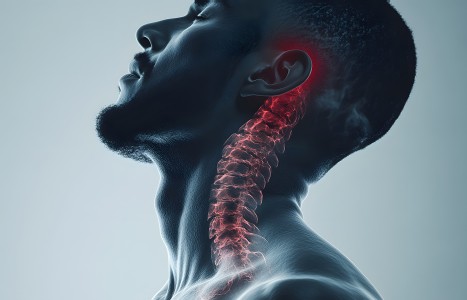Because they have yet to pass national legislation protecting the chiropractic profession, Japanese DCs are in a similar situation that U.S. DCs faced. We were fortunate enough to be able to pass chiropractic licensure state by state. The DCs in Japan must accomplish this nationally, which has proved to be an extremely difficult task. And in spite of their efforts, Japanese DCs are currently faced with two chiropractic professions.
The Role of Reassessment: The Clinical Audit Process
Patients want relief of symptoms. The traditional biomedical approach focuses on ruling out red flags of serious disease and providing symptomatic relief. Unfortunately, the biomechanical source of symptoms is left undetected, leaving the patient at risk for a recurrent clinical problem. The modern functional approach begins with a thorough history of the relationship of activity to pain. This is followed by a functional examination designed to capture two distinct categories of positive findings: the movements that are painful and the movements that are painless but have abnormal motor control (AMC).
International guidelines have summarized the modern evidence-based approach to musculoskeletal pain (MP) management by stating, "The goal of care should shift from removal of symptoms to improvement in activity intolerances related to symptoms."1 A within-session goal is reduction in mechanical sensitivity (MS) as uncovered during the examination.10,32-33
The means of care typically are identified by finding the chief AMC functional deficits the patient has that are related to their activity intolerances. Modern MP management shifts the focus from merely treating symptoms to restoring function in those activities that are most impaired. This is particularly valuable because leading indicators of ongoing disabling symptoms include the belief that hurt equals harm; lower than normal pain thresholds; failure to be mindful of the need to pace activity, and excessive worry about pain that is not activity-limiting.21,23-24,35 A functional approach guided by a focused functional history and examination is the key to pain management, injury prevention, and functional restoration.
Initial Patient Evaluation
The first step in patient evaluation involves diagnostic triage to rule out red flags of serious disease.8,37 When red flags are present, further testing and/or referral is indicated. If there are no red flags, then reassurance and reactivation advice is provided.3
Patients want to know the cause of their pain, the prognosis, what the MP specialist can do for them, what they can do for themselves, and what they should be careful about.4,31 Unfortunately, the cause of pain is difficult to identify.2-3 Red flags represent less than 1 percent of patients and nerve-root problems less than 10 percent. The remaining 90 percent may have pain from specific generators (myofascial, facet, SI, etc.). Most tests are unreliable in identifying the specific pain source.8,37 In spite of this, MP typically is not disabling for long periods, even if recurrences are the rule rather than the exception.6
The question of how long an episode will last is difficult to answer. Certain historical factors such as frequency of recurrences, long duration of current episode, fear-avoidance beliefs, radicular symptoms, and pain intensity are yellow flags and can reliably predict the course of care.15,23-24 The examination is also valuable in determining prognosis. The presence of nerve-root signs are a sign of a slower recovery. In addition, a therapeutic trial can determine not only prognosis, but what manual therapy and/or self-care is most likely to be efficacious.10,25,32-33 Specifically, if a treatment is provided, a post-treatment reassessment performed and "within-session" improvement is noted, then "between-session" improvement is 3.5 times more likely to occur.
This process of finding the MS and reassessing it post-treatment is termed the "clinical audit process" (CAP).17-22 The CAP guides care by aiding the specialist to determine what they can do for the patient, what the patient can do for themselves, and the patient's prognosis. Since pain recurs, it is necessary that a self-care exercise be found which empirically reduces the patient's MS.6 If the patient only attributes a successful outcome to manual therapy or other passive care, dependency rather than independent function has been achieved.11-12,26,38
The Clinical Audit Process
The therapeutic trial begins by finding a painful motion that reproduces the patient's chief complaint (Figure 1). The assessment uses active rather than passive motion and includes range of motion, orthopedic (e.g., Kemp's) or functional (e.g., squat) testing. The patient's MS is the independent variable in the therapeutic trial.
Figure 1: Active Movement Assessment

Figure 2: Testing Response To A Treatment - Clinical Audit Process (CAP)

There are two situations in which an MS cannot be found. The first occurs when the patient has postural pain. This is typically intermittent and aggravated by prolonged static loading (sitting, standing, lying).26 The treatment is typically prescription of ergonomic advice/training and micro-breaks. The second is when pain is due to central sensitization. In this case, the pain is constant and not worse or better with any mechanical loading. Central sensitization is a descending pain-modulation dysfunction that lowers pain thresholds so that non-noxious stimuli is perceived as noxious.7-14 These somatosensory changes are likely to be related to dysfunctional motor control (i.e., flexion withdrawal).
The prognosis for such patients is guarded due to the altered sensory processing. Treatment primarily focuses on motor-control training designed to enhance functional capacity and alter cognitive-behavioral pain expectancies.28,35-36
There are three possible responses to a therapeutic trial of an exercise. If MS decreases, you have found a treatment that has created a "within-session" improvement. This predicts a high likelihood of "between-session" improvement. If an exercise decreases the MS during the post-treatment audit, this should be prescribed as self-care. Patients in this category are considered to have mechanical pain. The self-care exercise is within the patient's functional training range (FTR). This is "the range which is painless and appropriate for the task at hand."29 The CAP is the key to identifying the patient's FTR. The exercise in a patient's FTR satisfies these criteria: painless (or symptom centralizing); appropriate (good motor control); and post-treatment audit reveals a decrease in MS.21
If MS does not change, attempt further therapeutic trials to seek an alternative exercise, manual therapy or modality that reduces the patient's MS. If no procedure can be found and the patient has chronic pain, it is likely the patient has central sensitization. If MS worsens and the patient has acute pain, it is likely that the pain generator is acting irritably and has a chemical component (e.g., inflammatory). In this case, the initial treatment is temporarily "letting pain be the guide" and invoke anti-inflammatory strategies (relative rest, ice, fish oil, NSAIDs, etc.). The prognosis for this patient is excellent for a speedy recovery after a short delay.
If MS worsens and patient has chronic, recurrent pain, it is likely that the pain generator is sensitized from central sources.
Key Take-Home Points
In summary, most patients have pain of a mechanical nature and the prognosis for a speedy recovery is outstanding. In such patients, the CAP will help determine a self-care exercise that is effective on day one. A subset of mechanical patients have pain of postural origin. Unless the tissue can be spared from prolonged static overload, only minimal improvement will occur. Patients who have strained or injured their tissues will often have a chemical or inflammatory component to their pain. Such patients have an excellent prognosis, but recovery will not be immediate and there typically is no self-care exercise in the first few days. A final group of patients who have chronic pain with all activities reflects central sensitization. Such patients have a guarded prognosis and often require a combination of motor-control and cognitive-behavioral training.
McKenzie sums up the goal of the patient-centered orientation of the CAP: "If you adopt certain positions or perform certain movements that cause your back to go out, then if we understand the problem fully, we can identify other movements and other positions that, if practiced and adopted, can reverse the process. You put it out; you put it back in."27
According to the World Health Organization's revised guidelines on disability, the goal of health care is to enable patients to return to participation and independent functioning in their chosen activities.16,34,38 The specific outcomes used to measure progress toward these goals are the patient's activity intolerances in their activities.1,15-16 The CAP allows clinicians to adjudicate within-session what treatments are most efficacious.
References
- Agency for Health Care Policy and Research (AHCPR). Acute Low-Back Problems in Adults. Clinical Practice Guideline Number 14. Washington, D.C.: US Government Printing, 1994.
- Borkan JM, Koes BW, Reis R, Cherkin DC. A report from the second international forum for primary care research on low back pain: reexamining priorities. Spine, 1998;23:1992-6.
- Burton K, Waddell G. Information and advice to patients w/ back pain can have a positive effect. Spine, 1999;24:2484-91.
- Butler D, Moseley L. Explain Pain. Adelaide, Australia: Noigroup Publications, 2003.
- Cook G, Burton L, Hoogenboom B. Pre-participation screening: the use of fundamental movements as an assessment of function. Part 1. N Am J Sp Phys Ther, 2006;1:62-72.
- Croft PR, Macfarlane GJ, Papageorgiou AC, et al. Outcome of low back pain in general practice: a prospective study. BMJ, 1998;316:1356-9.
- Desmeules JA, Cedraschi C, Rapiti E, et al. Neuorphysiologic evidence for a central sensitization in patients with fibromyalgia. Arthritis Rhematism, 2003;48:1420-9.
- European Guidelines for the Management of Acute Nonspecific Low Back Pain in Primary Care. www.backpaineurope.org
- Gray G. Kinetic Chain. Seminar Notes, 2005.
- Hahne A, Keating JL, Wilson S. Do within-session changes in pain intensity and range of motion predict between-session changes in patients with low back pain. Aust J Physiother, 2004;50:17-23.
- Harding V, Williams A. Extending physiotherapy skills using a psychological approach: cognitive-behavioural management of chronic pain. Physiotherapy, 1995;81:681-7.
- Harding VR, Simmonds MJ, Watson PJ. Physical therapy for chronic pain. Pain: Clinical Updates, 1998; 6:1-4.
- Janda V. On the concept of postural muscles and posture in man. Aus J Physioth, 1983;29:83-4.
- Juottonen K, Gockel M, Silen T, et al. Altered central sensorimotor processing in patients with complex regional pain syndrome. Pain, 2002;98:315-23.
- Liebenson CS. Yeomans S. Outcomes assessment in musculoskeletal medicine. J Man Ther, 1997;2;67-75.
- Liebenson CS. Improving activity tolerance in pain patients: a cognitive-behavorial approach to reactivation. Top Clin Chiropr 2000;7(4):6-14.
- Liebenson CS. Advice for the clinician and patient: functional training. Part 1: new advances. J Bodyw Mov Ther, 2002;6;4:248-53.
- Liebenson CS. Advice for the clinician and patient: spinal stabilization, an update. Part 2: functional assessment. J Bodyw Mov Ther, 2004;8;3:199-213.
- Liebenson CS. Advice for the clinician and patient: spinal stabilization, an update. Part 3: training. J Bodyw Mov Ther, 2004;8;4:278-87.
- Liebenson CS. The importance of the functional examination in patient-centered care for back patients. Kiropraktoren, Nov 2005;4-8.
- Liebenson CS. Rehabilitation of the Spine, Second Edition: A Practitioner's Manual. Baltimore: Lippincott/Williams and Wilkins, 2007.
- Liebenson CS. A modern approach to abdominal training. Part 3: putting it together. J Bodyw Mov Ther, 2008;12:31-6.
- Linton SJ, Hallden BH. Can we screen for problematic back pain? A screening questionnaire for predicting outcome in acute and subacute back pain. Clin J Pain, 1998:14;1-7.
- Linton SJ. A review of psychological risk factors in back and neck pain. Spine, 2000;9:1148-56.
- Long A, Donelson R, Fung T. Does it matter which exercise? Spine, 2004;29:2593-602.
- McKenzie R, May S. The Lumbar Spine Mechanical Diagnosis & Therapy. Waikanae, New Zealand: Spinal Publications 2003.
- McKenzie R. McKenzie Institute International pamphlet, 1998.
- Moore JE, Von Korff M, Cherkin D, et al. A randomized trial of a cognitive-behavioral program for enhancing back pain self-care in a primary care setting. Pain, 2000;88:145-53.
- Morgan D. Concepts in functional training and postural stabilization for the low-back-injured. Top Acute Care Trauma Rehabil, 1988;2:8-17.
- Nachemson AL. Newest knowledge of low back pain. Clin Orth Rel Res, 1992;279:8-20.
- Turner JA. Educational and behavioral interventions for back pain in primary care. Spine, 1996; 21:2851-9.
- Tuttle N. Do changes within a manual therapy session predict between session changes for patients with cervical spine pain? Aust J Physiother, 2005;20:324-30.
- Tuttle N. Is it reasonable to use an individual patient's progress after treatment as a guide to ongoing clinical reasoning? J Manipulative Physiol Ther, 2009;32:396-403.
- Victorian Work Authority, Clinical Framework. www.workcover.vic.gov.au/dir090/vwa/home.nsf/pages/chiropractors
- Vlaeyen JWS, De Jong J, Geilen M, et al. Graded exposure in the treatment of pain-related fear: a replicated single case experimental design in four patients with chronic low back pain. Behav Res Ther, 2001;39:151-66.
- Vlaeyen JWS, Morley S. Active despite pain: the putative role of stop-rules and current mood. Pain, 2004;110:512-6.
- Waddell G, Burton AK. Current concepts of rehabilitation for the management of low back pain. Best Pract Res Clin Rheumatol, 2005; 19:655-70.
- World Health Organization. International Classification of Human Functioning, Disability and Health. 2001.



